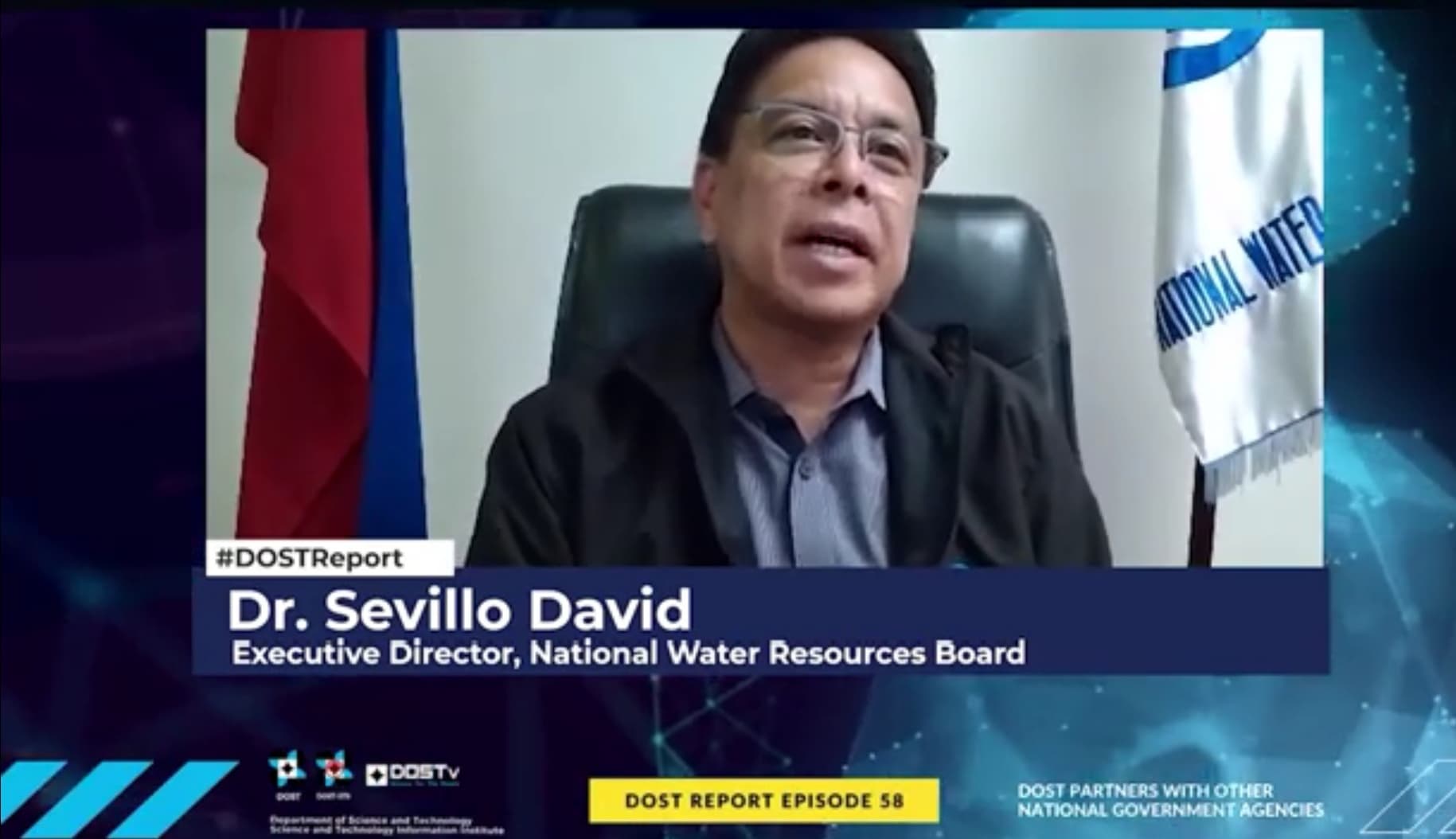DOST-NWRB collaboration eyes to provide more efficient water resources management system

The National Water Resources Board (NWRB) has been partnering with the Department of Science and Technology (DOST) through the Philippine Council for Industry, Energy and Emerging Technology Research and Development to implement various programs and efforts to help government in monitoring the conditions of our water resources in the country.
In the recent episode of the DOST Report broadcast on 04 June 2021, Dr. Sevillo D. David, executive director of NWRB, shared that DOST-PCIEERD and his agency agreed to work together towards the program called Climate Resilient Initiative. It aims to provide science-based information that can be used in planning for critical infrastructure while considering the effects of climate change and creating steps to attain effective disaster risk reduction initiatives.
Under this program is the Automated Real-Time Monitoring System or ARMS. The technology was developed by Mapua University that employs sensors to provide the NWRB, the regulating agency for all water resources development and management activities in the country, access to real-time data on water levels and to serve as a decision support tool for the daily management of the reservoirs.
According to Dr. David, as of now, sensor loads have been installed in weather stations in Ambuklao Dam, Apuna Dam, Pitikan Dam, Bobok Dam, Toyongan Dam, Badayan Dam, San Roque Dam, and Filex Dam that are now helping transmit real-time data.
”We are continuing the development and updating our equipment and system in order to have more efficient ways of data collection which could result to better services to the public, ” said Dr. David.
Meanwhile, Dr. David also shared another project under the partnership of DOST-PCIEERD and the NWRB which is the Ground Water Resources Management Plan. He said that this initiative can provide comprehensive appearance of groundwater or aquifer where we get our water supply.
”It can help to ensure the long-term sustainability of our groundwater resources through systematic and science-based management strategies for more effective and efficient management of our groundwater resources in the country,” said Dr. David.
He added that through the DOST-PCIEERD-NWRB collaboration and other private institutions and academe, they were able to produce a groundwater management plan
for Zamboanga City and its nearby places. The plan includes the establishment of four monitoring wells and stations in the said city.
Dr. David said that they are also targeting to install monitoring wells and stations with automatic sensors in different parts of the country like in Iloilo, Manila, Cagayan de Oro City, and Angeles City to measure the level and quality of water underneath and eventually the data collected will be shared and posted in the website of NWRB.
He said that DOST and NWRB can also work on exploring the new and affordable water saving technologies to address our water demand in the near future.
Showing his full support for the project, DOST Secretary Fortunato T. de la Peña underscored the importance of this collaborative efforts for both government agencies. He said that with the knowledge, expertise, and guidance from the experts and scientists from DOST and its network of researchers from the academe, it would allow the NWRB to implement their programs and services to the public much better.
The DOST Report is a regular program of the Science and Technology Information Institute of the Department of Science and Technology (DOST-STII) under the DOSTv broadcast platform that highlights the various initiatives and innovations of the DOST. This S&T program is aired every Friday, 4:00 PM to 5:00 PM, through the DOSTv Facebook page and YouTube channel. (By Allan Mauro V. Marfal, DOST-STII)
Dr. Sevillo D. David, executive director of the National Water Resources Board (NWRB), shares with the viewers of the DOST Report how crucial their collaboration with DOST-PCIEERD is to the success of the implementation of their programs, particularly on real-time dam monitoring and groundwater monitoring. (Screenshot from DOST Report Episode on 04 June 2021)
A screenshot of the dashboard of the ‘Arms4dams’ web portal for the real-time monitoring of the dams. (Photo from DOST-PCIEERD website)
A closer look at the monitoring system. It has a sensor control box that measures the groundwater’s PH, electrical conductivity, temperature, and depth. (Photo from DOST-PCIEERD website)

